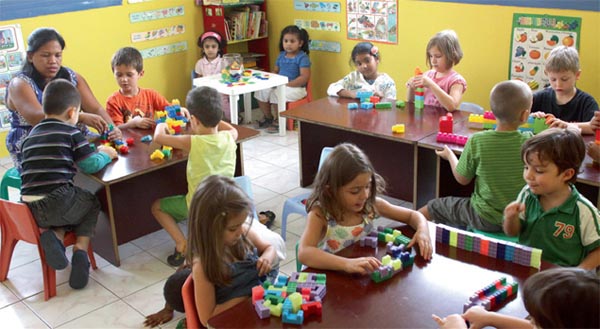
Quick measures needed, says study firm
Over 75,000 new educators will need to be hired by 2015 in the UAE as the Arab world’s growing teacher shortage threatens to overshadow the region’s educational gains. This teacher deficit will need to be addressed quickly and effectively, said Karim Daoud, managing director of Pearson in the Middle East.
He said the outlook is even more worrying for the region as a whole. Projections undertaken in 2013 by Unesco’s Institute for Statistics indicate that 1.6 million new teaching posts will need to be created by 2015 in the Arab world if universal education is to be achieved. This figure is likely to increase to 3.3 million by 2030 if “drastic measures” are not taken.
Teacher shortage is a global problem compounded by a growing number of retirement-age teachers and a record number of children entering education. But it is a problem that is felt particularly deeply in the Arab world, where there is a rapidly growing school age population — expected to soon reach 9.5 million. Demand for secondary teachers in this region is greater than primary teachers, due to more subject-specific instruction and longer teaching hours.
Reducing the teacher shortage will be critical to improving the region’s performance in educational rankings such as the OECD’s Programme for International Student Assessments (PISA). Moving upwards on globally recognised educational tables is a key priority of some governments in the region, including the UAE.
According to Daoud, achieving education targets set by governments in the Arab world will be dependent on those countries’ education systems attracting and retaining sufficient teaching talent.
“In 2013, Pearson conducted a far-reaching global study into what helps promote good learning, called the Learning Curve. The report brought together an extensive set of internationally comparable data on education inputs and outputs, covering 50 countries. One of the key findings of this vast study was that there is no substitute for good teachers. Teachers have a profound influence — and having a better one is statistically linked to not only a higher income later on in life, but a range of improved social results.
“The world’s most successful systems have a number of things in common, including the ability to find ways to attract the best people to the teaching profession and the ability to provide relevant, ongoing training to teachers throughout their careers,” Daoud said.
Amanda Collins, Pearson’s professional development director in the Middle East, said that a solution to the teacher shortage does not simply lie in producing more teachers. To make a real difference to students’ educational attainment, she said, teachers must be rigorously trained, well-qualified and undergo regular professional development.
“Good teachers are essential to high quality education. According to the Learning Curve research, finding and retaining great teachers is not only a question of high pay. Rather, teachers need to be treated as the valuable professions that they are, and not as technicians in a huge, educational machine,” Collins said.
There is no silver-bullet solution to the problem, and a “concerted effort” from policy makers, teacher training institutions and the education system itself will be required. She pointed to the admirable work the UAE Government’s Ministry of Education has been undertaking to improve the standard of teaching in the country and keep the best teachers in the system.
“The Ministry of Education is actively committed to retaining its talent through its professional development programmes. The Ministry, like other education agencies throughout the region, is looking to ‘professionalise’ the teaching profession by introducing new teaching and Principal standards.”


